
Medieval food: A man ladles porridge from a large pot over a fire
Poor people’s food was boring!
In the Middle Ages in Europe, what people ate depended a lot on how rich they were. Poor people (which was almost everybody) ate mainly barley, or in some places oats.
What’s barley like?
All about the history of oats
More articles about the Middle Ages
Sometimes they made their barley into bread, and sometimes into pancakes or pizza, and sometimes into barley porridge (like oatmeal) and sometimes into barley soup. But every day, breakfast, lunch and dinner, most of every meal was barley. It must have been very boring!
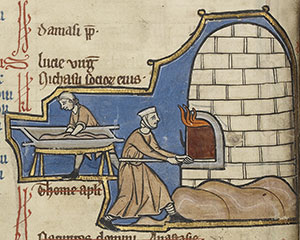
Medieval food: People baking bread
Vegetables, honey, and cheese made medieval food taste better
As much as they could, the poor people found other things to eat with their barley to make it less boring. They grew onions and cabbage and garlic – they didn’t even have carrots yet! – to put in their soup. And they made cheese to eat with their bread and melt on their pizza.
The history of cheese
They gathered apples and pears and mushrooms as well, so they could make apple pies or baked apples. And they tried to get honey to sweeten their treats.
Where did apples come from?
How did they get mushrooms?
What’s the history of honey?
Medieval European people grew herbs like parsley, chives, basil and rosemary to flavor their food. Mostly poor people drank apple cider or ale (kind of like beer) or beer in England and Germany. Further south, they drank wine in France and Italy and Spain. Even the beer was made from barley!
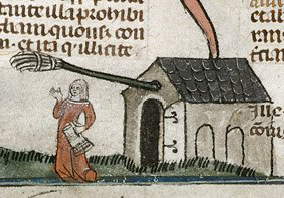
Medieval food: Alewife outside her house – a sort of beer bar
Rich people’s food tasted better
Rich people also ate a lot of bread, but they made their bread out of wheat so it tasted better.
All about wheat and bread
And they had more choices of other things to eat with their bread. Rich people ate meat – pork and roast beef and stew and lamb chops and deer and rabbit.
History of pigs and pork
History of cattle
Where did sheep come from?
And they had spices to put on their food, expensive spices that had to come all the way from India like pepper and cinnamon.
Was pepper very expensive?
What kind of plant is cinnamon from?
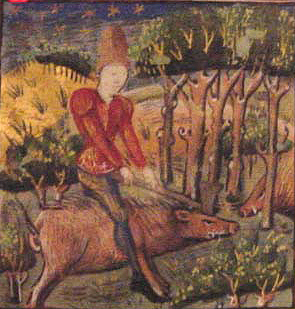
Medieval painting of a man with a pig
Even salt was expensive!
Even salt was often too expensive for poor people, and only rich people had it. In fact, when you were eating in a medieval castle, the salt would be on the table in a huge fancy salt cellar, and the rich people would sit near the salt so they could use it, while the poor people sat further down the long table and couldn’t use the salt. We still use the expression, “above the salt” to mean a rich person.
The history of salt
More about medieval castles
Most people didn’t eat breakfast
In medieval Europe (unlike in ancient Greece or Rome), most people didn’t eat breakfast. Breakfast was only for old or sick people, or travelers, or for men who were going to working hard in the fields all day. Most people just ate dinner (their main meal) at about 11 am, and supper around 4 pm.

These are medieval glass cups – they actually do stand up enough to keep from spilling, despite the bumps on the bottom
Rye bread – the later Middle Ages
By the later Middle Ages, Europeans were beginning to get some new foods. In northern Europe, people started to eat rye bread instead of barley, because rye was easier to grow in cold, wet conditions.
Where did rye bread come from?
Rye made a darker, heavier bread, and people called it “black bread” as opposed to the “white bread” made from barley and wheat that they liked better. But they ate rye bread anyway, because it was cheaper.
In drier places, by the 1100s people started to grow sorghum, which needed less water – they got sorghum from Islamic Spain.
Where did sorghum come from?
Other new foods – sugar, lemons, and carrots

Selling sugar in medieval Europe (Theatrum sanitatis, codice 4182 della R. Biblioteca Casanatense. Rome, ca. 1375 AD)
Other new foods were treats. Food scientists in India had developed sweet oranges and worked out how to dry sugar cane juice into sugar crystals, and sugar technology spread first to Central Asia, then to West Asia, and finally reached Europe in the 1200s AD.
Why was it so hard to get sugar?
Food scientists in Central Asia developed lemons and oranges and carrots, and all of these, too, crossed West Asia to be grown in Europe for the first time in the 1200s AD.
History of carrots
History of lemons and oranges
In addition, warmer weather at this time allowed farmers in northern Europe to grow more food, and people there started to be better fed. They grew bigger and smarter, and they became strong soldiers and smart inventors. By the end of the Middle Ages, instead of importing other people’s food inventions, the Europeans were beginning to experiment and explore for themselves.

Brueghel painting of a wedding feast
Learn by doing: make barley soup
More about European food after 1500
Suggestions for having a Medieval Day
More about Sugar
Bibliography and further reading about medieval weather:
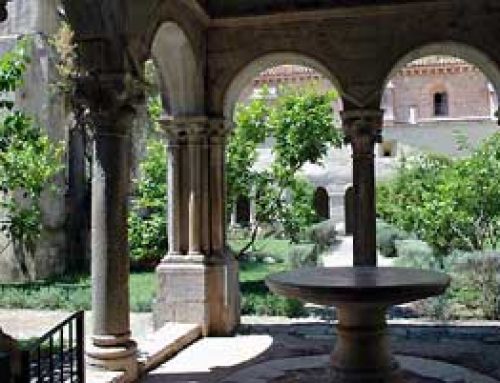
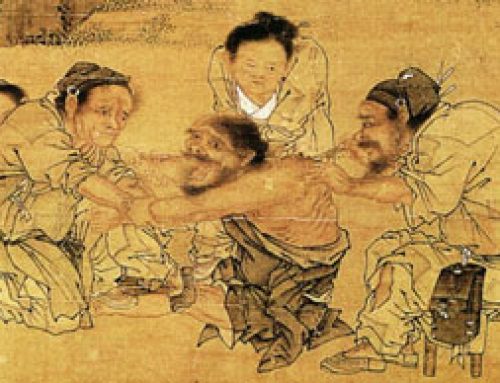

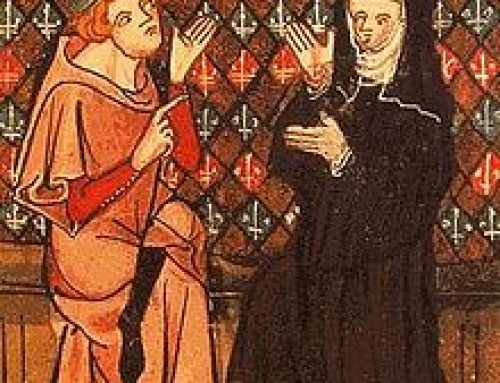

Hey Karen Carr thankyou for this website is full of all the info i needed about my Social Studies assignment.
Oh and also you would be a great Social Studies teacher because this artical is an all you need to know like for reals.
Thanks! I have put in some time as a middle school Social Studies teacher and it was a great gig.
best web ever!
Thank you for the information, it was one of the only reliable sources I could find :)
Thanks, Shayleigh! I’m glad we could help.
Hi
This is sooo helpful!!? I Loved it!
Thank you, Olivia! I’m glad we could help.
same it’s sooooooooooooooooooooooooooooooooooooooooooooooooooooooooooooooooooooooooooooooooooooooooooooooooooooooooooooooooooooooooooooooooooooooooooooooooooooooooooooooooooooooooooooooo helpful
hay
Hay is only food for horses! Maybe I should add a section about animal food to this article?
This information helped me a LOT!!!!!!!!!!
Thanks a LOT!!!!!!
Wonderful! I’m glad we could help, Mohamed!
this story is dope helps me with social studies
aye me to
I’m glad we could help! Thanks for stopping by, both of you.